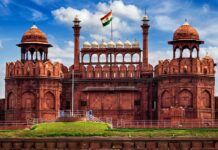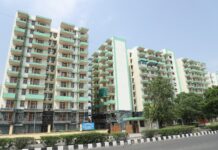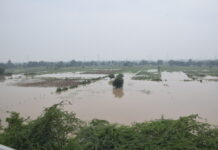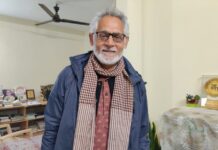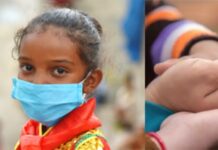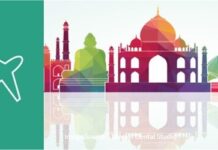[vc_row][vc_column][vc_column_text]
Kin shouting in disgust for the treatment of their loved ones, or wailing inconsolably over the dead outside hospitals, craving for oxygen cylinders, ventilators and hospital beds from all directions and dead bodies piling up at crematoriums and burial grounds for funeral.
What is more horrifying than hundreds of bloated dead bodies floating on river waters or dogs feasting on the flesh of the dead?
The time has come when one can’t even look to a dignified end. This scenario, which betrays government’s monumental failure to handle the situation arising from the surge in corona cases in the country, could have been averted had the elementary healthcare services been strengthened before hand to cushion the burden on the health facilities.
Now that the epidemic has made its way into the rural hinterland it can pose a massive challenge for the government. With the passage of time, panic can be seen writ large on the faces of villagers of Hapur district in Uttar Pradesh as residents started contracting the disease. Reports of casualties too are trickling in from villages. Villagers from Dhaulana and Pilakhuwa blocks complain that nobody, least of all the administration, is bothered about their plight even as covid deaths are rising. Lack of adequate testing and medical facilities may further worsen the situation.
This is the reality of a district close to the National Capital Delhi. Imagine the gravity of the situation in villages across the country where healthcare services are miniscule or are there for name sake.
Dead bodies floating in River Ganges in UP and Bihar is a scary scene never witnessed in the past. As casualties are mounting villagers unable to afford wood for funeral pyre are simply drowning their dead in the river. This is bound to cause environmental concerns as the bloated dead bodies have started rotting polluting the air.
It’s a matter of utter shame that people are unable even give a dignified funeral to their dead. This negative development getting wide coverage from the international media is bringing disrepute to the nation. What’s ironical is that all this happening under a self styled nationalist government.
With the healthcare infrastructure available in the country creaking under severe strain due to the burden of covid cases patients suffering from other non-communicable ailments are finding it hard to access medical assistance. Terminally ill patients with cancer, diabetes, hypertension and tuberculosis and cardiovascular diseases are dying or waiting to die due to lack of urgent medical intervention.
While the pandemic could not have been averted, sufferings of millions could certainly have been alleviated had the government paid heed to strengthen the country’s basic healthcare infrastructure including public health centers (PHCs), community health centers (CHCs) and sub centers. The massive loss of life we are witness to has more to do with the medical negligence than the disease.
Why didn’t the government act on time to tide over the crisis? This is the question being asked by an average Indian. People have started venting their anger against the government on the social media and other platforms.
People are at loss to understand why the time the government got between the first and the second wave to prepare itself for the challenge was wasted. If the government had taken timely action people would not have been left to die in hospitals in the absence of oxygen beds and ventilators. Unfortunately, the public has to pay for the wrong priorities of the government for which elections seem to be more important than the fight against the national calamity.
The PHCs and CHCs are known as backbone of India’s healthcare infrastructure. They could have been utilised in this health emergency. With a little rejuvenation by enhancing their bed capacities, manpower and medical equipment they could have proved an asset in the fight against the once-in-a-century pandemic.
Currently around 4,000 people are succumbing to Covid every day. Most of these casualties are attributed to the lack of healthcare facilities. Experts believe the actual rate of deaths from coronavirus will be way higher than the official figures if the testing is increased.
Even after indications of second wave, the government chose to look the other way. It neither tried to improve health infrastructure nor did it care to hire more doctors, leave alone increasing the number of hospital beds and providing makeshift hospitals. Oxygen and ventilators in hospital remained woefully inadequate to cater to the rush of patients.
The aid that poured in from across the globe in the form of oxygen, ventilators, vaccines and other medical equipment was not rushed to the states instantaneously. This too exposed the government’s insensitivity to the sufferings of the public. However, foreign aid is being glorified by the government.
Now that the pandemic has spread to rural India the Covid could prove unmanageable in due course of time. Reports of people losing their lives in absence of proper healthcare are pouring in from every nook and corner of the country.
Had we focused on the healthcare infrastructure, the impact of calamity could have been mitigated to a large extent. Precious lives could have been saved with proper management of our rural healthcare. In absence of healthcare in rural areas patients in panic are rushing to overburdened urban health facilities and dying due to lack of oxygen.
Away from the media limelight, villages are hit hard by the deadly virus. Lack of awareness about the disease and its symptoms is taking toll on the lives. Villagers generally don’t take fever, cold and body ache, fatigue seriously. But unfortunately these happen to be the common Covid symptoms. Even if they develop these symptoms, they first hide them to escape the stigma and then resort to self-medication. This results in eventual death. The stigma attached to the deadly disease is bound to worsen the problem further.
It may be noted here that around 90 percent of the Covid patients can be managed with home isolation. They can be treated with fever tablets, multivitamins and vitamin C. But for this, they need proper guidance from doctors. But this too is elusive for rural areas. This is where government’s role comes in, but the incumbent government has let them down.
With inadequate medical facilities CHCs have been rendered redundant. The beds in these centres are no of use with no oxygen or ventilator to save patient’s life.
According to the Indian Health Ministry’s (IMA) rural health statistics of 2019, there are 15,7,411 sub centers, 2,4,855 PHSs and 5,335 CHCs in the country. The doctors engaged in these centers could have been used as consultant through telemedicine to provide basic information about Covid. This could have saved crowding in big hospitals.
Use of telemedicine can mitigate the damage by easing the panic among patients and thereby help save lives. Besides, state governments can provide oxymeters to village heads to measure blood level which falls drastically in patients due to panic. However, this can be managed by proper guidance through telemedicine. If one’s oxygen level does not improve, the patient can be sent to PHSc for oxygen.
Usually, patients in Covid can cure themselves by using simple drugs such as paracetamol, vitamin C and multivitamins. These centres can ensure provision of the medicine.
Besides, the centres can provide proper psychological counseling to the patients. Many patients panic after testing Covid positive. The more they panic, the more their condition deteriorates. The government can engage mental health experts for the counseling of the patients. These experts, through tele-counseling, can help ease the fear among the patients.
[/vc_column_text][/vc_column][/vc_row]
Disclaimer: We do undertake rigorous checks on content provided by contributors before publishing the same. If you come across some factual errors, kindly bring this into our notice and we shall review your objection and claim as per our policy and display correction credits and corrections on the article itself.
The opinion expressed in the article is of the writer. Writer is a freelance journalist/journalist based in Delhi

